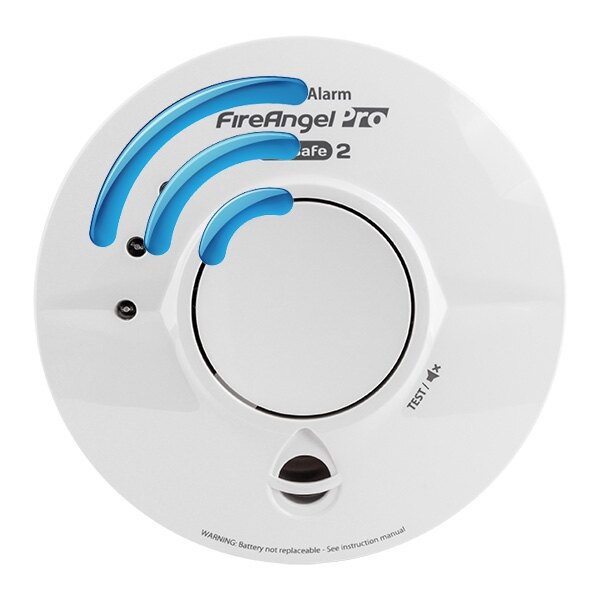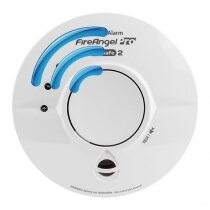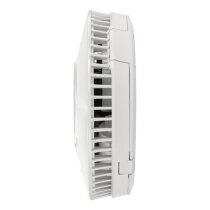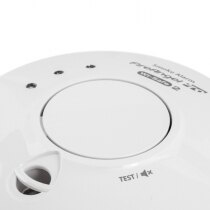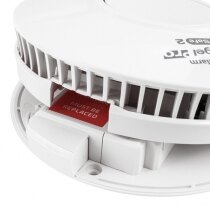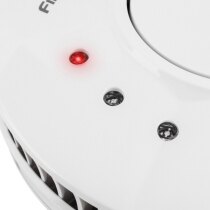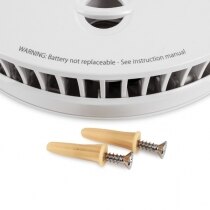-
Contact
Sales & Customer Service
0800 612 6537 support@safelincs.co.uk Live ChatDelivery Enquiries
0800 077 6149 - Resources
Fire & Safety Solutions
CALL OUR TEAM NOW 0800 612 6537
Also FREE from UK mobiles
Quick Delivery
From £4.19 inc VAT
Live Chat - Online
Instant help & Advice
Trade Discounts
and exclusive pricing
0% Credit Available
Open an account now
5 Star Customer Feedback
Mains Radio-Interlinked Thermoptek Alarm with Battery - FireAngel Pro WST-230
Discontinued Product
This product has been discontinued.
Product Overview
Interlink
Technical Data
FAQs (3)

The FireAngel Pro WST-230 is a mains powered optical smoke alarm with built-in radio-frequency technology. The thermally enhanced optical smoke sensor is less prone to nuisance alarms caused by cooking fumes and steam, making it ideal for areas adjacent to the kitchen. Capable of wirelessly interlinking with up to 50 alarms from the FireAngel Pro WST230 series, a radio-interlinked system ensures all connected alarms sound if one detects a fire, providing the earliest possible warning of danger.
- Mains powered radio-interlinked optical smoke alarm
- Sealed 10 year lithium back-up battery - designed to last the life of the alarm
- CE marked and Kitemarked to BS EN 14604
- Built-in radio-frequency technology
- Up to 50 alarms from the FireAngel Pro WST230 series can be wirelessly interlinked
- Safelincs Exclusive 5 Year Warranty
- Radio-frequency range: 200m in free space, up to 35m in buildings
- Thermally enhanced optical smoke sensor: less prone to false alarms caused by cooking fumes
- Test, hush and Sleep Easy™ function
- Locate function: allows you to find the alarm that activated the system
- Suitable for installations complying to BS 5839-6: 2019 Grade D1
- Ideal for bedrooms, living rooms, hallways and areas adjacent to the kitchen (not suitable for kitchens and garages)
- An interlinked system provides the earliest possible warning of fire
- Supplied with fixings; 2 x screws and 2 x rawl plugs
In a wireless-only system the maximum number of compatible units that can interlink is 50, while a hard-wired-only system is limited to 30 units. In a mixed hard-wired and wireless alarm system these maximum quantities can be exceeded.
For each "group" of hard-wired alarms in a system, only one should be a wireless model. For example, in a 3 storey house you could hard-wire 2x ST-230 and 1x WST-230 alarms together on each floor with all of the WST-230 models wirelessly interlinked to each other. This can technically be done to a maximum of 50 groups of 30 alarms, though FireAngel has not designed, optimised, or tested these alarms for such a large system. Having so many alarms interlinked would create large communication delays between the alarms, potentially resulting in occupants not being given adequate warning of a fire. It is heavily recommended that customers desiring a large amount of alarms for a single property instead look into full Fire Alarm Systems which are designed for larger premises.
The tables below show all the units that can interlink with the FireAngel Pro Wi-Safe 2 alarms.
Alarms from the Same Series
| Model Number | Type of unit | Type of interlink |
|---|---|---|
| WST-230 | Mains Powered Optical Smoke Alarm | Radio-interlinked or Hard-wire interlink |
| WHT-230 | Mains Powered Heat Alarm | Radio-interlinked or Hard-wire interlink |
| ST-230 | Mains Powered Optical Smoke Alarm | Hard-wire interlink |
| HT-230 | Mains Powered Heat Alarm | Hard-wire interlink |
Compatible Alarms
|
Model Number
|
Type of unit
|
Type of interlink
|
| WST637 | Optical Smoke Alarm | Radio-interlinked |
| WHT637 | Heat Alarm | Radio-interlinked |
Carbon Monoxide Alarms
|
Model Number
|
Type of unit
|
Type of interlink
|
| W7-CO-10X | Carbon Monoxide Alarm | Radio-interlinked |
Ancillary Products
|
Model Number
|
Type of unit
|
Type of interlink
|
| W2-SVP-630 | Wireless Strobe and Vibrating Pad | Radio-interlinked |
| W2-LFS-630 | Wireless Low Frequency Sounder | Radio-interlinked |
| Product Code | FAWST230 |
|---|---|
| Alternative Product Codes | WST230, WST-230, FAWST230-FAP, FAWST230FAP |
| Brand | FireAngel |
| Back-Up Battery | Self-charging Lithium Battery |
| Dimensions (HxDia) | 52x141mm |
| Operating Temperature | -10°C to +45°C |
| Relative Humidity | Up to 90% |
| Sound Output | 85dB |
| Weight | 0.28kg |
| Product Datasheets |
Q. What sort of smoke alarm system would I need to install for a HMO?
A.
BS 5839-6 recommends that one or two storey HMOs with an individual floor area of no more than 200sqm (not the total of both floors) should have a Grade D smoke alarm system installed. Grade D refers to mains powered smoke alarms with a back up battery power supply. The alarms can be interlinked either by wire or by radio signal and the system does not require a separate fire alarm panel. For HMOs of 3 storey or higher, a Grade A panel system would need to be installed. This can cover the whole of the building, or can be used just for the communal areas with a separate Grade D system installed for the individual dwellings. For both applications, the level of cover should be a minimum of LD3 (in all escape routes) but this may change according to the fire risk assessment.
Q. If the radio interlinking signal on one unit fails will the units still work as stand alone units.
A.
Yes, should the radio interlinking signal fail the units will continue to sound independently should they detect a fire.
Q. My ceiling light is on a dimmer switch. Can I still power my radio-interlinked mains smoke alarms from this lighting supply?
A.
In modern housing the lighting circuit will travel around your house with the lights being fed from it. Between the circuit and the light will be a switch (or in this case a dimmer) which will control the light. Your mains powered alarms are connected directly to the circuit and have constant power, so are not affected by switches or dimmers. In older homes that have not had the electrics updated this may not be the case so it is advisable to consult an electrician.
Key Product Features
What's Included?
Every FireAngel FAWST230 is supplied with the following components.
- 1 x FireAngel WST-230 wireless optical alarm
- 1 x Sealed 10-year lithium battery
- 2 x Screws & rawl plugs
- 1 x Instruction manual

Approved Partner
Customer Reviews
4 customers have given this product an overall rating of 5 out of 5
Reviews by real customers
All of our product reviews are written by real customers that have purchased this product from us and are published without modification.Rating: 5 / 5 Stars
Reviewed by:
Does what it says on the box
Published on: 29th January 2017
Rating: 5 / 5 Stars
Reviewed by:
Less prone to triggering doing toast! Should be standard for installs
Published on: 5th December 2016
Rating: 5 / 5 Stars
Reviewed by:
Easy to install and set up. I used two smoke alarms and a heat alarm. Satisfied the building inspector. Brilliant.
Published on: 3rd November 2016
Looking for more information?
If you have any questions or would like more information about this product you can ask one of our specialists.
Live Chat Available Now
Direct Telephone
01507 464181




















